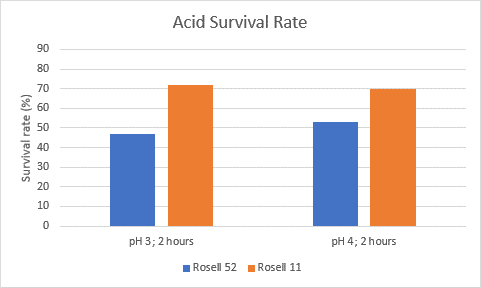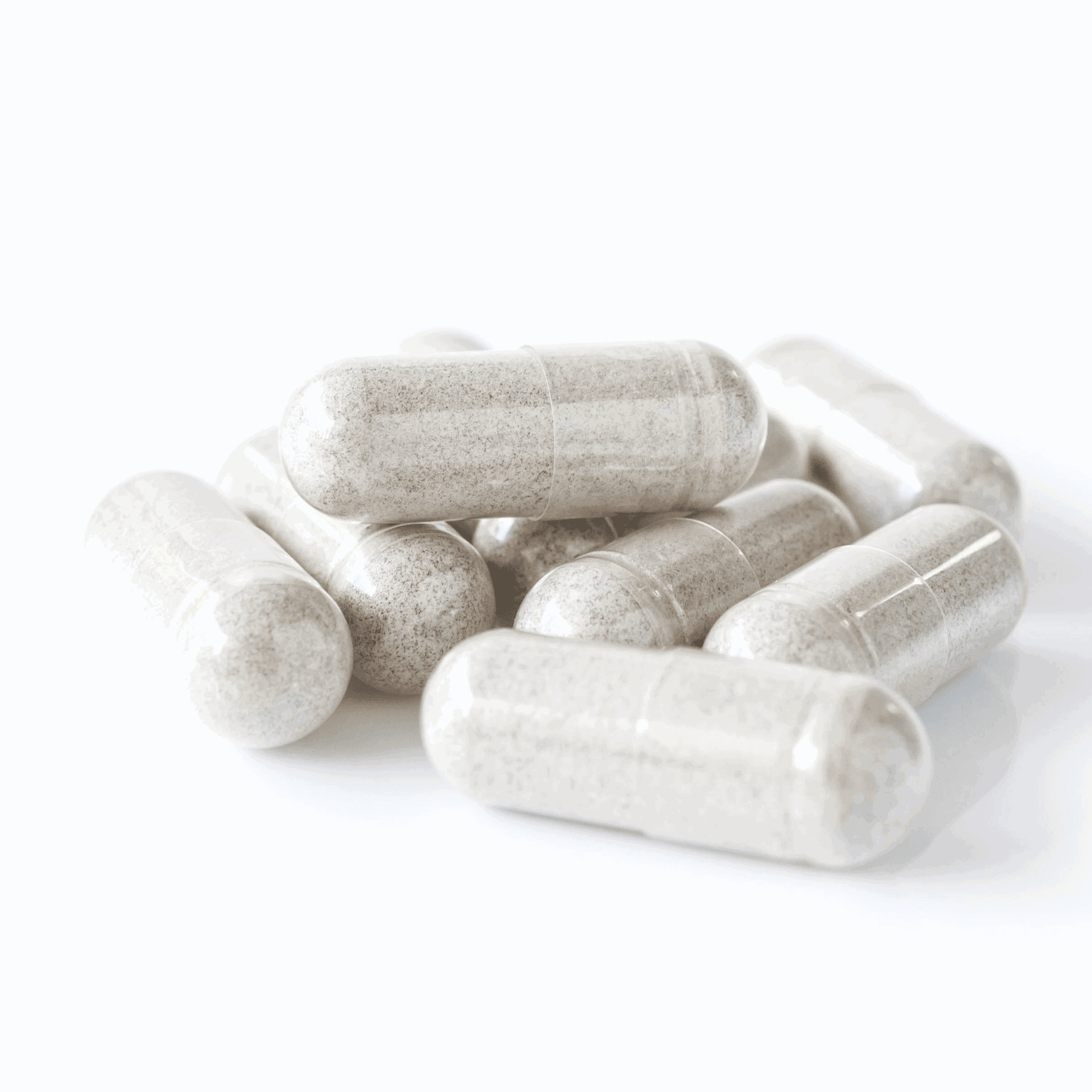Do probiotics survive stomach acid?
If you are reading this, then the chances are that you have some concerns about whether probiotic bacteria in supplements reach the gut microbiome alive. You may be confused as to whether probiotics are a good addition to your daily health routine, or a waste of money. There has been a lot of coverage in the media regarding the survival of probiotic bacteria through stomach acidity, and this concern is very valid; however, if you read on, I will explain about this subject in more detail, and put your mind at rest that there are some effective, well tested and researched probiotic supplements available on the market.
In part, the concern over the survival of probiotics through the stomach has been perpetuated by one small study1 performed at University College London back in 2014, which tested 8 probiotic products and found that only one of the probiotics tested survived gut acidity and then flourished in the intestines. We reported on this study at the time, and our response to this study on probiotics can be read on the Probiotic Professionals site. It is important to state that none of our products were included in this study, and we are very confident that if they had been, the results would have shown that our strains show excellent survivability in most acid conditions.
So, if only certain probiotic strains are able to survive the harsh conditions of the stomach, whilst many don't, how can we tell the good from the bad, and spend our money wisely?
In this article we look at:
- What can kill probiotics?
- How do bacteria in probiotic supplements survive stomach acid?
- pH testing of strains
- Enteric coating and timed-release technologies
- How do you know if probiotics are alive?
- The ultimate proof of survival - human clinical trials
What can kill probiotics?
Typically, probiotic bacteria are delicate, and may be killed by a variety of different factors, including:
- Antibiotics
- Antimicrobials
- Heat
- Acidity
- Alcohol
They could also be at risk if they are placed into inhospitable environments, for example in a microbiome (gut) that contains high amounts of bad bacteria. This scenario is known as dysbiosis and can be caused by many modern-day factors such as travel, stress, antibiotics, and a western diet.
How do bacteria in probiotic supplements survive stomach acid?
We must take into consideration that not all probiotic strains have the same properties, and some strains may even have the ability to survive antibiotics, antimicrobials or intense heat and acidity.
Let’s take the Bacillus coagulans species as an example, they are known as soil-based organisms and can survive unfavourable conditions like intense heat or very acidic environments due to their protective coating.Some strains of lactic acid bacteria like Lactobacillus acidophilus Rosell -52 can also survive a degree of acidity, which we will have a look at in the next section.
So, we can see that some probiotic strains are more robust than others, therefore it’s important to make sure the strains in your supplement are well-researched and suitable for your needs. For example, if you’re taking antibiotics, healthcare professionals would usually recommend taking probiotics two hours away from antibiotic medication to avoid any damage to the probiotics;however, Lactobacillus acidophilus Rosell-52 and Lactobacillus rhamnosus Rosell-11 are two strains that have been shown to reach the gut alive even when taken at exactly the same time as antibiotics. Therefore, it would be best to choose a supplement containing these strains if you’re taking antibiotics.
Health professionals can visit these strains' entries in the Probiotics Database: Lactobacillus acidophilus Rosell-52 and Lactobacillus rhamnosus Rosell-11
pH testing of strains
As a manufacturer of probiotic supplements, one way to be sure of the efficacy of our product range is to ensure that the strains of bacteria used undergo rigorous in-vitro pH testing2 whilst the product is still in its development stage.
This testing exposes the bacterial strains to different levels of acidity in a laboratory environment and shows the percentage of bacteria that survive at different pH levels. It gives a good indication as to how well the strains will fare in the acid environment of the stomach, and then on exposure to the bile acids in the upper portion of the GI tract.
Obviously, the stomach is a challenging environment that exposes any probiotics taken to a low (acidic) pH; however, the exact pH changes constantly, dependent on the time of day and the presence or absence of food. It is recommended that our probiotics are taken with breakfast each day, as stomach acid is naturally at its weakest in the mornings, and this is then buffered (or diluted) still further by the presence of food in the stomach. Taking your probiotic supplements at this time of day offers you the greatest percentage survival of bacteria, and therefore the greatest health benefits from the product.

The above bar chart shows the percentage of two different strains of probiotic bacteria (Lactobacillus acidophilus Rosell-52 and Lactobacillus rhamnosus Rosell-11) that survive when subjected to two different pH levels. As you can see these two strains offer good survivability scores at pH4, which is similar to the average stomach acid levels in the morning following a meal. These strains are naturally robust strains, that show good survivability in acid conditions.
Enteric coating and timed-release technologies
Some probiotic manufacturers use a type of technology such as Bio-tract®, which is a time-release technology thought to protect their bacteria from the low pH in the stomach. Whilst this may well be of benefit for some strains of probiotic bacteria, it is really not necessary if the strains themselves display excellent natural survivability in acid conditions, as ours do.
Enteric coating can also help probiotics to survive transit through the harsh stomach environment. Enteric coating is a special coating for capsules, which is intended to remain intact in the stomach but to dissolve in the small intestine, and provides another option for ensuring probiotics survive to reach the gut alive. However, critics of enteric coating have pointed out that it can involve the use of synthetic chemicals, as well as highlighting some doubts over whether the capsules eventually break down in the lower GI tract to release the probiotics, or if they pass through the intestines intact with their beneficial probiotic cargo still on board.
Therefore, it may be better to simply use hardy strains of bacteria that do not require other types of 'manufactured' protection to survive transit through the stomach.
For more about this subject, you may enjoy reading a page from our information section, Probiotic Myths - BUSTED!' - see 'The Survival Myth'.
How do you know if probiotics are alive?
The milk test is often used to check if probiotics are alive, the test involves adding the probiotics to milk and leaving it for a few days to see if clumps or curds appear. However, this method is largely unreliable, as not all species of bacteria will activate in these conditions to produce enough lactic acid to change the milk. Probiotic supplements are designed to activate in the gut, and not in milk.
Taking a gut microbiome test after consuming probiotics will rarely show the strains present, but they will show the genus or species of bacteria present in the stool. After consuming probiotics for a little while, you would expect to see an overall increase of good bacteria or a decrease in bad or pathogenic bacteria.
Ultimately, the most conclusive proof that probiotic strains are reaching the gut alive is based on how it makes the person feel when they are taking it.
If you experience health benefits from taking the product, this is confirmation that the supplement you are taking contains strains that are surviving the journey through the stomach and colonising effectively.
Most strains will start to show some kind of benefit after a week or so, but of course, sometimes it takes a little longer than a week, for example, for cholesterol health or skin-related conditions you may need to continue supplementation for around three months before seeing optimal results.
The ultimate proof of survival - human clinical trials
Choosing a product that has credible scientific research behind it (most importantly human clinical trials) showing that it positively impacts human health is the best way to know that you are spending your money wisely. By choosing a probiotic that has been used in studies on human subjects, and has demonstrated a positive influence on the health of the test subjects is perhaps the only reliable way to select the best probiotic for you. Learn more by reading the article: Research - is it all equal?.
It's important to remember that ifferent human trials look at different areas of health, for example a study may look for benefits to gut health from taking a certain probiotic strain, or it may look for improvements in vaginal health, or even in cholesterol levels. Be sure to look for studies that are relevant to your particular set of health symptoms, so that you can select the best probiotic product for yourself. Enjoying health benefits from taking a probiotic is the ultimate confirmation that the live cultures you are taking are surviving the journey through your stomach and colonising effectively.
Some probiotic strains have shown they need to be kept in the fridge to avoid higher temperatures that may kill them, however, more robust strains like the ones we use are shelf-stable at 25° and do not require refrigeration*. It’s best to avoid mixing probiotics directly into hot food or drinks, or anything acidic like orange juice.

If you find a probiotic product that constantly receives positive independent reviews and feedback, then this is another indication that the live cultures it contains are surviving their journey through the stomach and thriving as part of their host's resident microflora.
After all, the only thing that is important is whether or not the product works and brings health benefits. So why not conduct your own mini human trials and see which product works best for you.
If you enjoyed this article, you may also like:
Is it best to alternate probiotics supplements?
*Some of the other strains may require refrigeration after opening depending on format, packaging, and the heat/humidity in local environment. Contact manufacturer for guidance.
References
- Gaisford, S., & Fredua-Agyeman, M., (2014) ‘Comparative survival or commercial probiotic formulations: test in biorelevant gastric fluids and real time measurements using microcalorimetry’, Beneficial Microbes.
- Institut Rosell Lallemand (2016), 'Resistance to Gastric Acid', General Probiotic Training 27-29
- Tompkins T, Mainville I, Arcand Y (2011) The impact of meals on a probiotic during transit through a model of the human upper gastrointestinal tract. Beneficial Microbes, 2(4): 295-303
Popular Articles
View all Probiotics articles-
Probiotics24 Jun 2024
-
Probiotics11 Oct 2023
-
Prebiotics14 Aug 2023


